The FDA’s approval of a drug it says “will fill an important niche” in the treatment of chronic pain has caused a huge uproar over fears about its potential for abuse.
Zohydro was given the go-ahead in October 2013 for the treatment of moderate-to-severe chronic pain. Developed by the pharmaceutical company Zogenix, Zohydro is composed of an unmixed, undiluted 50-milligram shot of the opioid analgesic hydrocodone, which is the primary ingredient in the well-known and widely prescribed pain-relieving drug Vicodin. Zohydro is approximately five times more potent than Vicodin, however, and according to FDA Commissioner Dr. Margaret Hamburg, it will fill “an important and unique niche” in the crowded prescription painkiller marketplace. Zohydro was released in March, and all patients who receive a chronic pain diagnosis will now be eligible to obtain a prescription for this powerful narcotic.
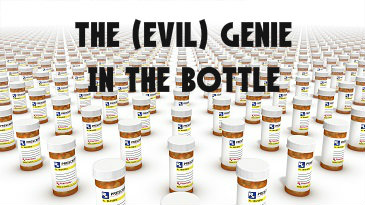 But the FDA’s decision to approve the release of Zohydro was highly surprising, since its own advisory panel had voted 11-2 against approval. The medical authorities appointed to this panel cited the highly addictive nature of opioid medications as the rationale for their thumbs-down verdict. In the months that have passed since the Zohydro ruling, the criticism directed at the FDA has only intensified, and the agency has been forced to repeatedly defend a decision that many see as indefensible.
But the FDA’s decision to approve the release of Zohydro was highly surprising, since its own advisory panel had voted 11-2 against approval. The medical authorities appointed to this panel cited the highly addictive nature of opioid medications as the rationale for their thumbs-down verdict. In the months that have passed since the Zohydro ruling, the criticism directed at the FDA has only intensified, and the agency has been forced to repeatedly defend a decision that many see as indefensible.
Addiction to pharmaceutical-grade painkillers has reached epidemic proportions, and the U.S. Centers for Disease Control has confirmed that opioids like OxyContin and Vicodin are the primary villains in this unfolding tragedy. Many medical professionals apparently came to view these drugs as panaceas and began prescribing them for all degrees of pain and a vast assortment of conditions, and, as a result, opioid addiction rates exploded. Since Zohydro is just a turbo-charged version of Vicodin, it is likely to be far more addictive than its milder cousin, and many medical experts believe it is the height of folly, if not downright hypocritical, for the government to be putting such a potentially dangerous substance into circulation at a time when the fight against prescription drug abuse has just begun to pick up steam.
In September 2013, the FDA announced it was actually tightening label restrictions on opioid painkillers, recommending that physicians use them only with patients who needed round-the-clock treatment for chronic pain and when there were no other viable treatment options available. This action was unequivocally justified as a strategy to combat addiction, so observers were taken aback when only one month later the FDA chose to approve a drug that threatens to accelerate the opioid addiction problem.
Critics of the FDA’s decision launched a campaign to convince the organization to change its minds, and representatives of more than 40 influential healthcare/addiction treatment organizations signed and submitted a letter to the agency that outlined the dangers of adding Zohydro to the menu of available opioid painkillers. But this ardent plea from the experts was to no avail, and the FDA steadfastly refused to reverse its puzzling course.
The (Evil) Genie in the Pill Bottle
The FDA is often accused of having an overly cozy relationship with big pharma and big agriculture, the industries it has been tasked with regulating, and this decision to legalize a new narcotic painkiller despite the negative judgment of its handpicked medical advisors would seem to represent a triumph of favoritism over sensible public policy. In response to what many see as an outrage, separate bills have now been introduced in the House and Senate that if passed would compel the FDA to remove Zohydro from the marketplace.
Compounding the situation, later in the year the drug giant Purdue Pharma will release another single-ingredient/high-dose hydrocodone painkilling drug, in a tamper-resistant form that may render Zohydro obsolete. This company already sells a tamper-resistant version of OxyContin, which allegedly cannot be crushed or dissolved for chewing or snorting and therefore is not supposed to be as addictive (chewing or snorting opioids delivers a more concentrated dosage to the bloodstream). A less malleable form of mega-jolt hydrocodone would presumably offer the same advantages, and the folks manufacturing Zohydro would likely have to switch to a tamper-resistant form themselves if they expected their drug to survive.
But addiction treatment specialists dispute the notion that making addictive drugs harder to alter makes them less dangerous. They note that virtually every person who has become dependent on opioid painkillers started out swallowing pills and only later resorted to chewing or snorting when their substance abuse problems raged out of control. Nevertheless, many fear the positive PR that tamper-resistant technology has received may help to defuse some of the opposition that this new class of drugs has generated, assuming they do eventually show up on the marketplace in this more “respectable” form.
Read How Big Pharma Is Testing Super Painkillers
05 May 2014
Prevent Prescription Drug Abuse In Your Teen
Prescription drug abuse is a major problem across the U.S. and for people of all age groups. Teens, however, are particularly vulnerable and if you have children you should be aware of the risks and dangers. There are two main kinds of drugs being abused by young people: narcotic painkillers and stimulants. The former are used to get a high, but the latter are often abused as a study aid. Stimulants, like those used to treat ADHD, produce wakefulness and many teens use them to stay up at night for studying.
The statistics regarding teen abuse of prescription drugs are alarming. Since 2008, abuse has risen by 33 percent. The statistics also show that most young people do not believe there are any risks in abusing prescriptions and that parents are largely ignorant when it comes to their children’s abuse of these drugs as well as the risks. Learn how to keep your teen safe.
Where Do Teens Get Prescription Drugs?
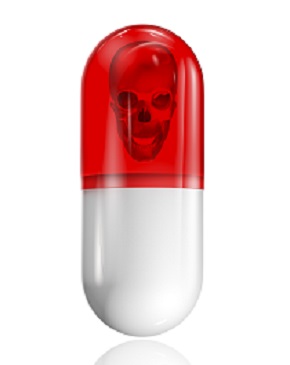 The first line of defense against abuse of prescriptions by your teen is to limit her access to them. So where are teens getting these medications? The most common location for teens to find prescriptions is the medicine cabinet. Teens get drugs right from their own homes. If they can’t find them there, they turn to their friends’ medicine cabinets. Many people are prescribed narcotics and stimulants, so finding them in homes is not difficult.
The first line of defense against abuse of prescriptions by your teen is to limit her access to them. So where are teens getting these medications? The most common location for teens to find prescriptions is the medicine cabinet. Teens get drugs right from their own homes. If they can’t find them there, they turn to their friends’ medicine cabinets. Many people are prescribed narcotics and stimulants, so finding them in homes is not difficult.
If the drugs cannot be pilfered, your teen can most likely buy them. Buying and selling prescriptions in high schools are common. Your teen may also be able to purchase medications online. Illegal pharmacies will not hesitate to sell to a teen.
How Can I Limit My Teen’s Access To Prescriptions?
With prescription medications so prevalent in homes, at schools and online, you need to be especially vigilant to restrict your teen’s access. If you have prescriptions in your home, keep them in a locked cabinet. If your teen has been prescribed one of these commonly abused medications, keep it locked up and dose it out to her as directed by her doctor. A common source for stolen medications is expired pills that have been forgotten or thrown in the trash. Be aware of your unused drugs, keep track of them and dispose of them properly.
Unfortunately, limiting your teen’s access to drugs at home is where your control ends. You cannot control her access at school or at friends’ houses. What you can do, though, is educate your teen about the risks and dangers of drug abuse. First read up for your own knowledge and then talk to your children about how harmful prescriptions can be. Although they are legal and prescribed by doctors, these factors do not mean they are safe for everyone.
It is also important to educate your family and friends about prescriptions and keeping them under control. Your teen may be able to find drugs at a grandparent’s house or any other family member’s, but if everyone kept tighter control of their medications, fewer drugs would end up on the black market.
Finally, it’s important that you maintain a close and open relationship with your teen. The more time you spend interacting and talking, the more able you will be to detect when something is wrong or if she is showing signs of abusing drugs. This healthy relationship will also mean that your teen will be more likely to come to you with questions, concerns, and problems related to drugs and drug abuse.
02 May 2014
Heroin Use In Kentucky Growing At Alarming Rates
Obtaining prescription drugs for non-medical purposes is often as simple as pilfering a medicine cabinet, but with national efforts aimed at curbing the misuse and abuse of prescription drugs there may be a changing trend in the popularity of prescription drugs versus street drugs. A report highlights the emerging increase in heroin use in Kentucky, and national trends mirror that data.
The report from the Kentucky Injury Prevention and Research Center (KIPRC) analyzes overdoses in Kentucky as well as associated mortality and financial consequences on the population. KIPRC is part of the University of Kentucky’s College of Public Health and is in partnership with the Kentucky Department for Public Health.36
The findings show that the number of total overdoses resulting in death or emergency room visits remained stable from 2011 to 2012. In addition, the number of overdoses due to benzodiazepines and prescription opioids decreased in that same period.
Why Are There So Many People Overdosing?
 The primary reason for overdose deaths in Kentucky was pharmaceutical opioids, and benzodiazepines were the primary drugs related to overdose ER visits, but they decreased nine percent, from a total of 939 visits in 2011 to 856 in 2012. The primary reason that admission was made for a stay in the hospital related to overdose was self-harm. The highest rates of overdose between 2008 and 2012 were found in Casey, Johnson, Carroll, Powell, and Nicholas Counties.
The primary reason for overdose deaths in Kentucky was pharmaceutical opioids, and benzodiazepines were the primary drugs related to overdose ER visits, but they decreased nine percent, from a total of 939 visits in 2011 to 856 in 2012. The primary reason that admission was made for a stay in the hospital related to overdose was self-harm. The highest rates of overdose between 2008 and 2012 were found in Casey, Johnson, Carroll, Powell, and Nicholas Counties.
The decrease in benzodiazepines and opioids may be explained by an increase in heroin use. There was a significant increase in inpatient hospitalization deaths and ER visits due to heroin use – 129 fatal overdoses in 2012, a 207 percent increase over the 42 deaths in 2011. There was also a 174 increase in hospitalizations and a 197 percent increase in ER visits related to heroin overdose.
The Substance Abuse and Mental Health Services Administration (SAMHSA) has also documented the increase in heroin use on a national scale. SAMHSA reports that heroin use grew by 80 percent from 2007 to 2012.
Likewise, the Centers for Disease Control and Prevention shows a 55 percent increase in overdose deaths related to heroin use for the period from 2000 to 2010. Many experts believe that the increase of heroin use and the decrease of prescription drug abuse are related.
The KIPRC report also provides an analysis of the costs that Kentucky incurs due to drug overdose. The total financial toll for the state rose by seven percent to $129.3 million in 2012, with $41.3 million billed to Medicare and $34.1 million to Medicaid.
Terry Bunn, PhD, director of KIPRC, says that the problem requires a comprehensive approach to finding strategies to alleviate the levels of drug abuse and the cost of treatment in Kentucky. The state needs to identify risk factors that lead to drug overdoses and develop interventions that prevent the likelihood of a drug overdose, she says. In addition, the report’s findings support the need for increased availability of naloxone, an opiate antidote that can be used by first responders as a lifesaving measure to prevent fatal overdose.
There are currently no fully proven medication-based options available to help people addicted to cocaine recover in treatment programs. Researchers and doctors have devoted a considerable amount of time to addressing this lack by either searching for new options or adapting existing medications to treat cocaine addiction. In a study published in April 2014 in The Journal of Neuroscience, researchers from three U.S. institutions explored the potential role of a medication called baclofen (usually prescribed to ease certain forms of severe muscle spasming) in helping recovering cocaine addicts avoid experiencing a drug relapse.
Can Medication Help Cocaine Addiction?
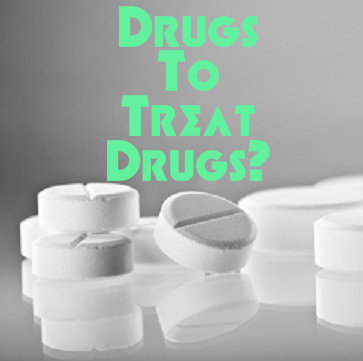 Researchers across the U.S. are investigating the potential usefulness of a number of existing medications as treatments for people affected by cocaine addiction. Medications currently being studied directly in human beings include disulfiram (Antabuse), normally used in alcoholism treatment; modafinil (Provigil), typically used in the treatment of sleep apnea or narcolepsy; and topiramate (Topamax), normally used to control seizure activity and previously adapted for alcoholism treatment. The National Institute on Drug Abuse (NIDA) reports that the most consistent positive results have come from disulfiram. In addition to these adapted medications, some researchers are exploring the possibility of developing a cocaine vaccine that could prevent the drug from producing its characteristic mind-altering effects.
Researchers across the U.S. are investigating the potential usefulness of a number of existing medications as treatments for people affected by cocaine addiction. Medications currently being studied directly in human beings include disulfiram (Antabuse), normally used in alcoholism treatment; modafinil (Provigil), typically used in the treatment of sleep apnea or narcolepsy; and topiramate (Topamax), normally used to control seizure activity and previously adapted for alcoholism treatment. The National Institute on Drug Abuse (NIDA) reports that the most consistent positive results have come from disulfiram. In addition to these adapted medications, some researchers are exploring the possibility of developing a cocaine vaccine that could prevent the drug from producing its characteristic mind-altering effects.
In the absence of proven medications, most cocaine treatment programs rely on behavioral therapies that achieve their beneficial effects by helping recovering addicts change the ways in which they think and react in the presence of internal and external cues associated with drug use. Common options here include cognitive behavioral therapy (CBT) and contingency management. In CBT, people recovering from cocaine addiction learn to identify the thoughts and emotions that support drug use, then go on to learn how to replace those thoughts and emotions with alternatives that don’t support the urge to use cocaine. Contingency management promotes basic program compliance and goal setting by financially or materially rewarding recovering addicts for following program rules and reaching important treatment milestones.
What Is Baclofen?
Baclofen is a chemical relative of a substance that occurs naturally inside the brain. In the treatment of severe muscle spasms, it produces its beneficial effects by slowing down the rate of nerve cell activity in the spinal cord (which, along with the brain, forms the central nervous system). Specific ailments improved by this slowdown include multiple sclerosis and certain spinal cord problems that trigger contractions in the body’s skeletal muscles. Baclofen is widely available as a generic, unbranded medication and comes in tablet form.
Usefulness In Preventing Relapses
Current scientific evidence indicates that, even after extended periods of drug-free living, a recovering cocaine addict can experience chemical reactions in the brain that trigger drug cravings in the presence of internal or external cues previously associated with drug intake. In the face of these cravings, many people in recovery relapse back into drug use. In the study published in The Journal of Neuroscience, researchers from the University of Pennsylvania, Wake Forest University and the Veterans Administration explored the usefulness of baclofen in preventing the chemical changes in the brain that support cravings and relapse. During the study, 23 men addicted to cocaine received either doses of baclofen or a placebo designed to mimic the medication’s appearance. These men ranged in age from 18 to 55.
One week into the study, the researchers used modern scanning technology to examine the participants’ real-time changes in brain function while they viewed cocaine-related imagery at a pace too rapid to register in conscious awareness. Effectively, these rapidly presented images recreated the types of subliminal drug cues that can trigger drug intake in both active users and recovering addicts. When they compared the brain reactions of the baclofen users to the reactions of other study participants, researchers found that the baclofen users showed a substantially lower level of activity in the brain areas responsible for triggering pleasurable sensations and increasing motivation. Normally, increased activity in these areas helps drive the urge to use more drugs.
Based on their findings, the authors of the study published in The Journal of Neuroscience believe that baclofen can help block the subliminal drug-using cues that support the onset of relapse in people recovering from cocaine addiction. However, their work did not include clinical testing of the medication’s ability to prevent drug cravings and relapse in real-world conditions. They point toward a need for further research to investigate baclofen’s effectiveness in such conditions.
Find Out How Alcoholics Respond To Baclofen
Social media has revolutionized the way we communicate, but can it be used to pick out at-risk areas for drug abuse, risky behaviors and HIV? According to a new study, the answer may well be yes. There are limitations to the approach, but our penchant for broadcasting our thoughts, intended actions and feelings through publicly accessible sites like Twitter could provide a pre-emptive warning about areas particularly at risk for a wide range of health issues. In the past, the approach has been suggested as a method of predicting influenza outbreaks, but the new study suggests that a spike in the number of people using key phrases like “get high” or “sex” in a particular area may be used to determine where to target public health programs relating to drug use and HIV.
The study comes from a new center at UCLA intended as a multi-disciplinary effort to investigate the potential of social media and cell phones to enable prediction (and hopefully the changing) of behavior in the population. The new piece of research is primarily focused on the prevention of HIV, but one of the key ideas the research was based on is the link between risk behaviors like sex or drug use and how they spread. The methodology of the study was fairly straightforward: collect a lot of tweets, use an algorithm to search for words and phrases indicating risky behavior and drug use (with a focus primarily on stimulant use) and plot them on a map. The finalized map was then compared to HIV data to see if the prime areas of suggestive tweeting correlated with the prevalence of HIV. In total, the researchers collected over 550 million tweets from May to December 2012, and compared the final map to an interactive map of HIV prevalence in the US. However, the most up-to-date information available when the researchers were conducting the study was from 2009.
Does Twitter Work For Tracking?
 The sample they analyzed contained over 8,500 tweets relating to sexual behavior and over 1,300 suggesting stimulant use. By state, California, Texas, New York and Florida had the biggest proportion of suggestive tweets, but the main hotspots identified in terms of the raw number of tweets identified were the District of Columbia, Delaware, Louisiana and South Carolina. The largest per-capita rates (taking state populations into account) were found in Utah, North Dakota and Nevada. However, for the purposes of the analysis, the focus was on the location of tweets in terms of counties, since state-level data wouldn’t offer much potential for a truly targeted approach.
The sample they analyzed contained over 8,500 tweets relating to sexual behavior and over 1,300 suggesting stimulant use. By state, California, Texas, New York and Florida had the biggest proportion of suggestive tweets, but the main hotspots identified in terms of the raw number of tweets identified were the District of Columbia, Delaware, Louisiana and South Carolina. The largest per-capita rates (taking state populations into account) were found in Utah, North Dakota and Nevada. However, for the purposes of the analysis, the focus was on the location of tweets in terms of counties, since state-level data wouldn’t offer much potential for a truly targeted approach.
The researchers then compared their findings to the data on HIV prevalence, and found a statistically significant relationship between the locations with the most risk-related tweets and reported cases of HIV. Although this is very encouraging, a big issue with the study is that the HIV data came from 2009, three years before the tweets were collected. While it stands to reason that the areas with the largest numbers of risk-related tweets would be those with the greatest prevalence of HIV, the problem of old data does hold back the implications of this research. If the prevalence of HIV didn’t change much over the intervening three years, then the study shows a correlation, but it doesn’t necessarily mean it’s possible to predict an outbreak.
Social Media Strategy In The Future
The biggest problem with the approach from the new study is getting up-to-date information about HIV prevalence, or indeed that of any condition or issue being monitored. The researchers suggest that for the approach to work there would need to be some form of “gold standard” for regularly updated information, and this is well within the realm of possibility. If a similar study conducted with up-to-date data comes up with comparable findings, there will undoubtedly be more incentive to invest money in the approach.
The other issue with the potential for applying this approach on a larger scale is the sheer volume of data required. The research used over half a billion tweets for a period of six months, and each one had to be checked using the algorithm to produce the final data. It’s called “big data” for obvious reasons, but it’s becoming increasingly important because we can theoretically collect and use this much information for the purposes of monitoring potential disease outbreaks. Studies like this show that it’s possible, but whether we’re really ready to start monitoring huge volumes of data like this all the time and for myriad purposes is another matter entirely.
Prospective Prevention Of Drug Addiction
If we set aside the organizational and logistical challenges presented by this approach—since it will be feasible in the near future—it could have profound consequences for how we target treatment, education and prevention programs for drug addiction. It’s been suggested as a method to help prevent the use of Adderall as a “study drug,” and if applied as a more wide-ranging strategy, it could help us identify areas where drug use is burgeoning. Effectively, it presents the very real possibility for the widespread prevention of drug addiction, not just the treatment of it.
Read How To Determine If you Have A Social Media Addiction
21 Apr 2014
What Are The Marijuana Regulations In Colorado?
In the November 2013 elections, Colorado voted to legalize recreational marijuana sales, and the first stores licensed to sell marijuana opened for business Jan. 1. Nevertheless, Colorado’s new laws do not mean that marijuana use is now free from regulation. On the contrary — the process of selling, purchasing and using marijuana is tightly controlled, especially as the state evaluates the manageability and success of legalization.
Selling And Purchasing Marijuana
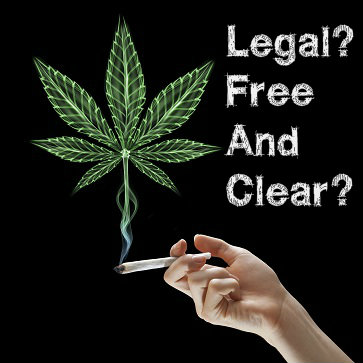 In addition to applying for and receiving an official license to sell recreational marijuana, there are other regulations by which retail locations have to abide. The state has mandated that marijuana retailers cannot open earlier than 8 a.m., or remain open after midnight. Many cities are setting even more restrictive hours; for example, Denver stores that sell recreational marijuana are required to close at 7 p.m.
In addition to applying for and receiving an official license to sell recreational marijuana, there are other regulations by which retail locations have to abide. The state has mandated that marijuana retailers cannot open earlier than 8 a.m., or remain open after midnight. Many cities are setting even more restrictive hours; for example, Denver stores that sell recreational marijuana are required to close at 7 p.m.
These stores also have to abide by security camera regulations. Each location is required to have a security camera pointed at the register with a picture that is clear and close enough for facial recognition.
Marijuana retailers are required to check the state-issued I.D. of customers to confirm their state of residence. They may sell up to one ounce of marijuana to Colorado residents, and one-quarter ounce to out-of-state residents.
State law does not permit any private individual to possess more than one ounce of store-bought recreational marijuana at a time. However, there are no regulations in place that prohibit people from purchasing marijuana from multiple stores in one day. One of the biggest concerns for law enforcement officers is how to prevent people from acquiring much more than the legal limit by visiting multiple stores and purchasing the full legal amount each time. This is part of the reason that stores are required to have security cameras through which individuals can be clearly identified.
The regulations about where customers are permitted to use their products are also fairly restrictive, and a bit confusing. Smoking marijuana is forbidden wherever cigarette smoking is banned, and any consumption of marijuana is forbidden in public areas like parks. Hotels and apartments are permitted to allow or ban smoking marijuana just as they can regulate cigarette smoking. Currently, it’s not clear whether private establishments like restaurants or coffee shops will be allowed to have discreet areas for marijuana use.
Consuming marijuana on federal land within Colorado is also forbidden. This includes most ski slopes, and all national parks and national forests. People who decide that these wide-open spaces seem ideal for discreetly consuming marijuana products should be aware that they would be subject to federal penalties if they were caught.
For the moment, privately owned residences in Colorado are the only places where recreational marijuana use is definitely permitted.
Some Cities Refuse To License Marijuana Sales
Under the new state regulations governing recreational marijuana, individual communities (cities and counties) in Colorado are allowed to refuse to license marijuana dealers and therefore prohibit recreational marijuana sales within their city or county limits.
Cities that have chosen to ban recreational marijuana sales include Colorado Springs, the state’s second largest city. Several other major cities, including Aurora and Boulder, are provisionally banning marijuana sales until local leaders make decisions about licensing regulations and monitoring. Many of these communities feel that the weeks between the November 2013 elections and the official start of marijuana sales on the first day of 2014 did not give them enough time to make decisions about intelligent implementation.
Some cities have not explicitly banned marijuana sales, but have created regulations that make it practically impossible for marijuana retailers to open. For example, at least one community requires prospective marijuana retailers to be so far away from any school property that they would be pushed to the very edges of town, where a new business would almost certainly fail.
Some of the approximately two-dozen cities that do not currently permit recreational marijuana sales have issued two-year moratoriums, and will reconsider the issue when those two years are up. Many of these communities want to wait to see how effective the state can be at regulating, licensing and monitoring establishments before potentially giving the go-ahead to marijuana sales.
16 Apr 2014
Is Prescription Drug Misuse, Abuse?
Prescription drug abuse is a pressing concern in modern American society, where millions of adults and younger individuals take potentially addictive medications without proper authorization or for purely recreational purposes. However, not all people who abuse a prescription medication necessarily understand what they’re doing. In a study published in March 2014 in the journal Substance Abuse, researchers from New York University used a small-scale experiment to estimate how many people know what constitutes participation in prescription drug abuse.
Is Misusing Abusing?
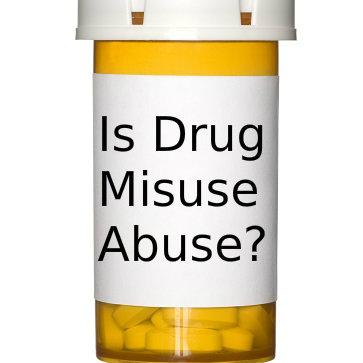 Prescription drug abuse is also sometimes known as the nonmedical use of prescription drugs. Technically, a person participates in this form of abuse whenever he or she knowingly takes his or her prescribed medication in a manner other than intended or knowingly takes a medication prescribed for someone else. However, some public health experts make a distinction between prescription drug abuse and prescription drug misuse. This distinction holds that abusers purposefully seek to obtain a nonmedical benefit from improper use of a medication, while misusers seek to obtain a medical benefit (such as pain relief) from improper medication use. In addition, public health officials typically distinguish between the abuse/misuse of medications that have no potential to trigger physical dependence and addiction, and the abuse/misuse of medications with an addictive potential.
Prescription drug abuse is also sometimes known as the nonmedical use of prescription drugs. Technically, a person participates in this form of abuse whenever he or she knowingly takes his or her prescribed medication in a manner other than intended or knowingly takes a medication prescribed for someone else. However, some public health experts make a distinction between prescription drug abuse and prescription drug misuse. This distinction holds that abusers purposefully seek to obtain a nonmedical benefit from improper use of a medication, while misusers seek to obtain a medical benefit (such as pain relief) from improper medication use. In addition, public health officials typically distinguish between the abuse/misuse of medications that have no potential to trigger physical dependence and addiction, and the abuse/misuse of medications with an addictive potential.
There are several reasons any given individual might start abusing/misusing a prescription medication. For example, some people mistakenly believe that since prescription medications come from doctors, they don’t pose a particular danger even when used in an unintended manner. Known risks of prescription medication abuse/misuse include the development of a diagnosable case of drug abuse or drug addiction (i.e., substance use disorder) and the onset of a nonfatal or fatal overdose.
Extent Of The Prescription Misuse Problem
The federal Substance Abuse and Mental Health Services Administration tracks year-to-year trends in prescription drug abuse through an annual project called the National Survey on Drug Use and Health. The most recent available figures from this survey, which cover part of 2011 and most of 2012, indicate that about 6.8 million American adults and teenagers abuse a mind-altering, potentially addictive medication in the average month. This number represents roughly 2.6 percent of the total adult and teen U.S. population. In descending order of popularity, the four classes of medications most commonly targeted for abuse are opioid painkillers, tranquilizers, stimulants and sedatives. Opioid painkiller abuse occurs far more often than any other form of prescription medication abuse.
How Many Understand The Definition Of Abuse?
In the study published in Substance Abuse, researchers from three branches of New York University (including the NYU School of Medicine and the NYU College of Nursing) used a small-scale assessment of 27 patients receiving treatment at a primary care clinic to estimate how many people understand the definition of prescription drug abuse (defined by the research team as nonmedical prescription drug use/prescription drug misuse). They began this assessment by asking each of the study participants to complete a brief questionnaire on the use/misuse of alcohol, tobacco, illegal/illicit drugs and prescription medications. In addition, the researchers used interviews to probe the answers each participant gave on his or her questionnaire. Six of the 27 patients had a recent history of prescription drug abuse/misuse, while another eight had a recent history of abusing an illegal/illicit substance.
The researchers found that all but one of the study participants understood what constitutes the use of an illegal or illicit drug. However, fully 41 percent of the participants inaccurately described what constitutes the abuse/misuse of prescription medications. The most frequently encountered inaccuracy was a failure to distinguish between medications with a potential for triggering problems with abuse and addiction, and medications that have no such potential. Interestingly, none of the study participants with a history of illegal/illicit drug use inaccurately understood the meaning of prescription drug abuse/misuse.
The authors of the study published in Substance Abuse concluded that many of the patients who discuss prescription drug abuse/misuse with their doctors may not understand the terms and definitions that doctors commonly employ. This tendency toward misunderstanding appears to be especially prominent in people who have no personal experience with illegal/illicit drug intake. Based on these findings, the study’s authors believe that primary care doctors who screen their patients for potential prescription drug abuse may inadvertently misidentify those patients as medication abusers in a significant number of cases. In line with this belief, they point toward a need to clarify the language used to explain prescription drug abuse/misuse to patients.
Read about The Effects Of Psychosis On Drug Misuse
Federal-level drug laws in the U.S. prohibit the sale or use of the plant-based, mind-altering drug marijuana. Despite this fact, as of 2014, the drug has been decriminalized or legalized in roughly a third of all U.S. states, and the trend toward decriminalization and/or legalization may continue in future years. In a study published in 2012 in the journal Drug and Alcohol Dependence, researchers from Columbia University investigated the question of whether decriminalization or legalization in all 50 U.S. states would lead to a rise in the diagnosis of cannabis use disorder (the combined term for cannabis abuse and cannabis addiction).
The Laws Of Marijuana
 The federal status of marijuana is mandated by a law called the Controlled Substances Act, which categorizes drugs and medications according to both their medical usefulness and their potential to trigger cases of substance abuse or substance addiction. Marijuana is classified as a Schedule 1 substance; substances with this designation officially have no verified usefulness in a medical context and come with substantial risks for abuse and addiction in all users. It’s important to note that federal law distinguishes marijuana from its main active ingredient, THC (tetrahydrocannabinol). In limited circumstances, doctors can use standardized THC products for such purposes as nausea control, pain relief and appetite encouragement. However, since the THC content of marijuana can vary widely, the allowance for THC use does not extend to marijuana use.
The federal status of marijuana is mandated by a law called the Controlled Substances Act, which categorizes drugs and medications according to both their medical usefulness and their potential to trigger cases of substance abuse or substance addiction. Marijuana is classified as a Schedule 1 substance; substances with this designation officially have no verified usefulness in a medical context and come with substantial risks for abuse and addiction in all users. It’s important to note that federal law distinguishes marijuana from its main active ingredient, THC (tetrahydrocannabinol). In limited circumstances, doctors can use standardized THC products for such purposes as nausea control, pain relief and appetite encouragement. However, since the THC content of marijuana can vary widely, the allowance for THC use does not extend to marijuana use.
Eighteen states in the U.S. (as well as the District of Columbia) have passed laws that make it possible to prescribe medical marijuana for their patients. Essentially, these laws decriminalize marijuana use in a medical context and take away the legal penalties otherwise associated with possession or consumption of the drug. In addition, both Colorado and Washington State have gone beyond decriminalization for medical marijuana and passed laws making it permissible for adults to possess and use small amounts of the drug in a recreational context not based on perceived medical need. These laws make marijuana use legal instead of merely decriminalized. However, in terms of ultimate jurisdiction, none of the state laws regarding medical marijuana or recreational marijuana take precedence over federal law.
Marijuana Abuse And Addiction
Like any other classic substance of abuse, marijuana produces rewarding sensations in the brain’s pleasure centers and, when used repeatedly, also makes long-term changes in brain chemistry that support the onset of physical dependence and addiction. According to figures compiled by the National Institute on Drug Abuse, one-quarter to one-half of all regular users of the drug will ultimately develop a cannabis addiction and meet the terms for diagnosing cannabis use disorder. Significant numbers of occasional marijuana users will also get addicted. As a rule, teenagers are substantially more susceptible to the drug’s addiction-promoting effects than adults.
A Rise In Abuse And Addiction Rates?
In the study published in Drug and Alcohol Dependence, the Columbia University researchers used information gathered from a large-scale, nationwide project called the National Epidemiologic Survey on Alcohol and Related Conditions (NESARC) to explore the issue of how the passage of medical marijuana laws in all U.S. states might impact rates for the diagnosis of cannabis abuse and cannabis addiction. After analyzing the information from NESARC, the researchers checked their findings against recent figures gathered from another nationwide project, called the National Survey on Drug Use and Health, which explores drug use trends in all American adults and teenagers.
Using the results gathered from the National Epidemiologic Survey on Alcohol and Related Conditions, the researchers concluded that, compared to people living in states that have not passed medical marijuana laws, people living in states that have decriminalized the use of medical marijuana are more likely to use marijuana, and also more likely to experience cannabis-related problems with abuse and addiction. Using the results gathered from the National Survey on Drug Use and Health, the researchers again concluded that people in pro-medical marijuana states use marijuana more often than people living in other states. However, neither survey indicated that the overall percentage of people affected by cannabis abuse and addiction is higher in medical marijuana states than in non-medical marijuana states. Instead, the number of affected individuals apparently goes up because the increase in total users leads to a larger pool of individuals at-risk for developing problems.
The authors of the study published in Drug and Alcohol Dependence did not offer a reason for the increase in marijuana users in states that allow medical marijuana. Since diagnosable problems appear in a certain percentage of all occasional and regular marijuana users, it seems logical to assert that a spread of medical marijuana throughout the U.S. and a subsequent increase in marijuana users would lead to increased numbers of cannabis use disorder diagnoses. However, continual future research will be needed to prove or disprove this assertion.
Read The Early Numbers Show Strong Marijuana Sales In Colorado


